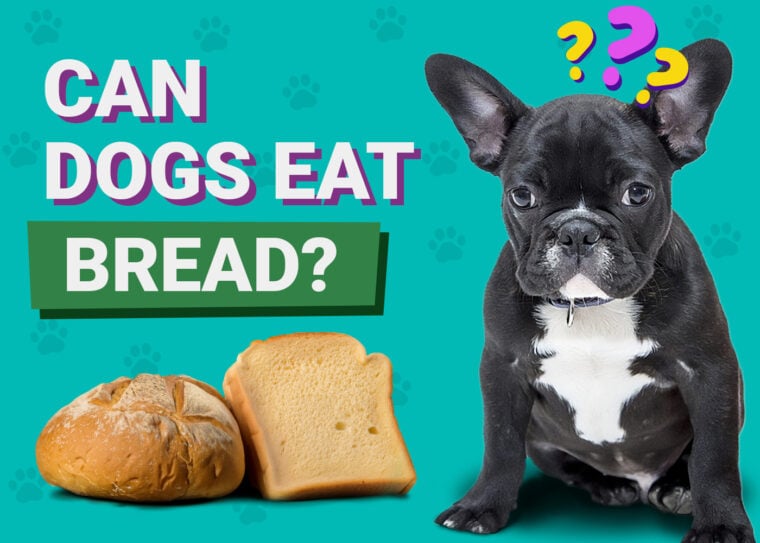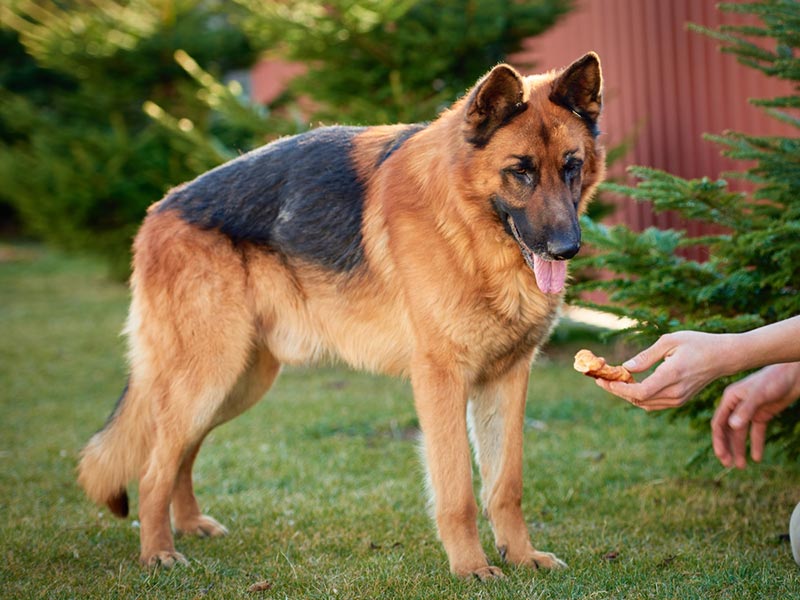
Click to Skip Ahead
Dogs seem to love everything that comes across our plates, including bread. That naturally leads you to wonder if bread is safe for dogs. According to the American Kennel Club, small amounts of bread are indeed safe for dogs, with some critical caveats. Most notably that it provides little nutritional value for them.
Bread is full of carbs and sugars, both of which contribute to obesity in dogs. So, while feeding them a slice of bread now and then isn’t harmful, it doesn’t exactly help them either. Plain white and wheat bread are the safest choices.
If you want to find out more about the pros and cons of feeding your dog bread, you’ve come to the right place. We’ve detailed info about that below, combined with a bunch of other relevant info like ingredients to avoid.
Are there any benefits to feeding your dog bread?
Small amounts of bread are sometimes reported to help soothe an upset dog’s stomach. This has perhaps been extrapolated from the fact that we often have toast when we feel poorly! For a dog with a gastrointestinal upset, a highly digestible bland food such as chicken or white fish and rice would usually be a better option. If your dog is unwell, always consult with your vet before making any dietary changes to make sure they are appropriate for your dog.
Bread makes your dog feel full, which can be thought to be helpful with voracious eaters. Still, this is not ideal as they need to eat a balanced complete diet with all the essential nutrients they need to stay healthy rather than filling up on bread, which has very little nutritional value. Safe vegetables such as carrots would be a healthier snack for your hungry dog or some plain, canned pumpkin.
Risks of Feeding Bread

Yeast
Yeast in uncooked bread dough is very toxic to dogs, who may develop severe and potentially fatal alcohol poisoning from the yeast fermenting in their stomachs. The dough also rises in the warmth of their stomach and causes severe discomfort and swelling. This condition is known as bread dough toxicosis, and it’s very dangerous.
Just like a drunk human, your dog can show signs of erratic movement, a bloated stomach, and excessive gas. It’s best to simply avoid this by keeping raw bread dough well away from your dog in the first place.
Obesity
Too much bread can lead to obesity, especially if it contains lots of sugar. Bread is best given as an occasional treat and not as part of a regular diet. Dogs do best when fed high-quality dog food with the right balance of protein and other essential nutrients.
Allergies
Some dogs are allergic to gluten, so keep them away from wheat bread at all costs. Dogs with gluten allergies that eat wheat bread can vomit, have diarrhea, and have skin signs such as itchiness and rashes.
Bread Ingredients to Avoid

Purina advises checking your bread for toxic ingredients before feeding any to your dog. Besides gluten allergies, numerous ingredients that are fine for humans are very poisonous for your best buddy. Let’s look at the major ingredients to avoid in bread products.
Tips for Including Bread in a Healthy Diet
As summed up above, bread shouldn’t be a regular part of your dog’s diet. But on the occasions when you want to indulge your furry friend, choose plain white or brown bread and use small portions.
That means no fancy bagels or specialty baked breads, either. While pumpkin and banana are normally safe for dogs, they’re typically paired with toxic nutmeg and sometimes nuts.
Conclusion
Bread is safe for dogs to eat as an occasional treat, but too much can lead to weight gain and eventually obesity. Some plain white or wheat bread is the best choice, just make sure to watch out for harmful ingredients like those listed above.
Featured Image Credit: JumpStory







